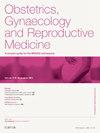Evidence-based management of women of advanced maternal age
Q3 Medicine
Obstetrics, Gynaecology and Reproductive Medicine
Pub Date : 2025-02-01
DOI:10.1016/j.ogrm.2024.11.002
引用次数: 0
Abstract
The average age of women at childbirth in industrialised nations has been increasing steadily for approximately 30 years. Women aged 35 years or over have an increased risk of gestational hypertensive disease, gestational diabetes, placenta praevia, placental abruption, perinatal death, preterm labour, fetal macrosomia and fetal growth restriction. The risk of trisomy 21, 18 and 13, and other sex chromosome aberrations (e.g. Klinefelter syndrome) increases significantly with maternal age, especially in women aged 35 years and older but there is no age-related association with an increased risk of triploidy or monosomy X. Unsurprisingly, rates of obstetric intervention are higher among older women. Of particular concern is the increased risk of antepartum stillbirth at term in women of advanced maternal age. In all maternal age groups, the risk of stillbirth is higher among nulliparous women than among multiparous women. Women of advanced maternal age (>40 years) should be offered low dose aspirin (in the presence of an additional risk factor for pre-eclampsia) and offered serial ultrasounds for fetal growth and wellbeing; given the increased risk of antepartum stillbirth, induction of labour from 39 weeks’ gestation should be discussed with the woman. In very advanced maternal age (≥45 years of age), women who conceived via in vitro fertilization are significantly at increased risk of preterm delivery and adverse maternal outcomes compared to those who conceive naturally.
高龄产妇的循证管理
近30年来,工业化国家妇女分娩的平均年龄一直在稳步增长。35岁或以上的妇女患妊娠期高血压、妊娠期糖尿病、前置胎盘、胎盘早剥、围产期死亡、早产、胎儿巨大和胎儿生长受限的风险增加。21、18、13三体和其他性染色体畸变(如Klinefelter综合征)的风险随着母亲年龄的增加而显著增加,特别是在35岁及以上的妇女中,但与三倍体或x单体的风险增加没有年龄相关性,不出所料,老年妇女的产科干预率更高。特别值得关注的是高龄产妇足月发生产前死产的风险增加。在所有产妇年龄组中,未产妇女的死产风险高于多产妇女。高龄产妇(40岁)应给予低剂量阿司匹林(存在子痫前期的额外风险因素),并提供连续超声检查胎儿生长和健康状况;考虑到产前死产的风险增加,从妊娠39周开始引产应与妇女讨论。在高龄产妇(≥45岁)中,通过体外受精受孕的妇女与自然受孕的妇女相比,早产和不良产妇结局的风险明显增加。
本文章由计算机程序翻译,如有差异,请以英文原文为准。
求助全文
约1分钟内获得全文
求助全文
来源期刊

Obstetrics, Gynaecology and Reproductive Medicine
Medicine-Obstetrics and Gynecology
CiteScore
0.90
自引率
0.00%
发文量
67
期刊介绍:
Obstetrics, Gynaecology and Reproductive Medicine is an authoritative and comprehensive resource that provides all obstetricians, gynaecologists and specialists in reproductive medicine with up-to-date reviews on all aspects of obstetrics and gynaecology. Over a 3-year cycle of 36 issues, the emphasis of the journal is on the clear and concise presentation of information of direct clinical relevance to specialists in the field and candidates studying for MRCOG Part II. Each issue contains review articles on obstetric and gynaecological topics. The journal is invaluable for obstetricians, gynaecologists and reproductive medicine specialists, in their role as trainers of MRCOG candidates and in keeping up to date across the broad span of the subject area.
 求助内容:
求助内容: 应助结果提醒方式:
应助结果提醒方式:


